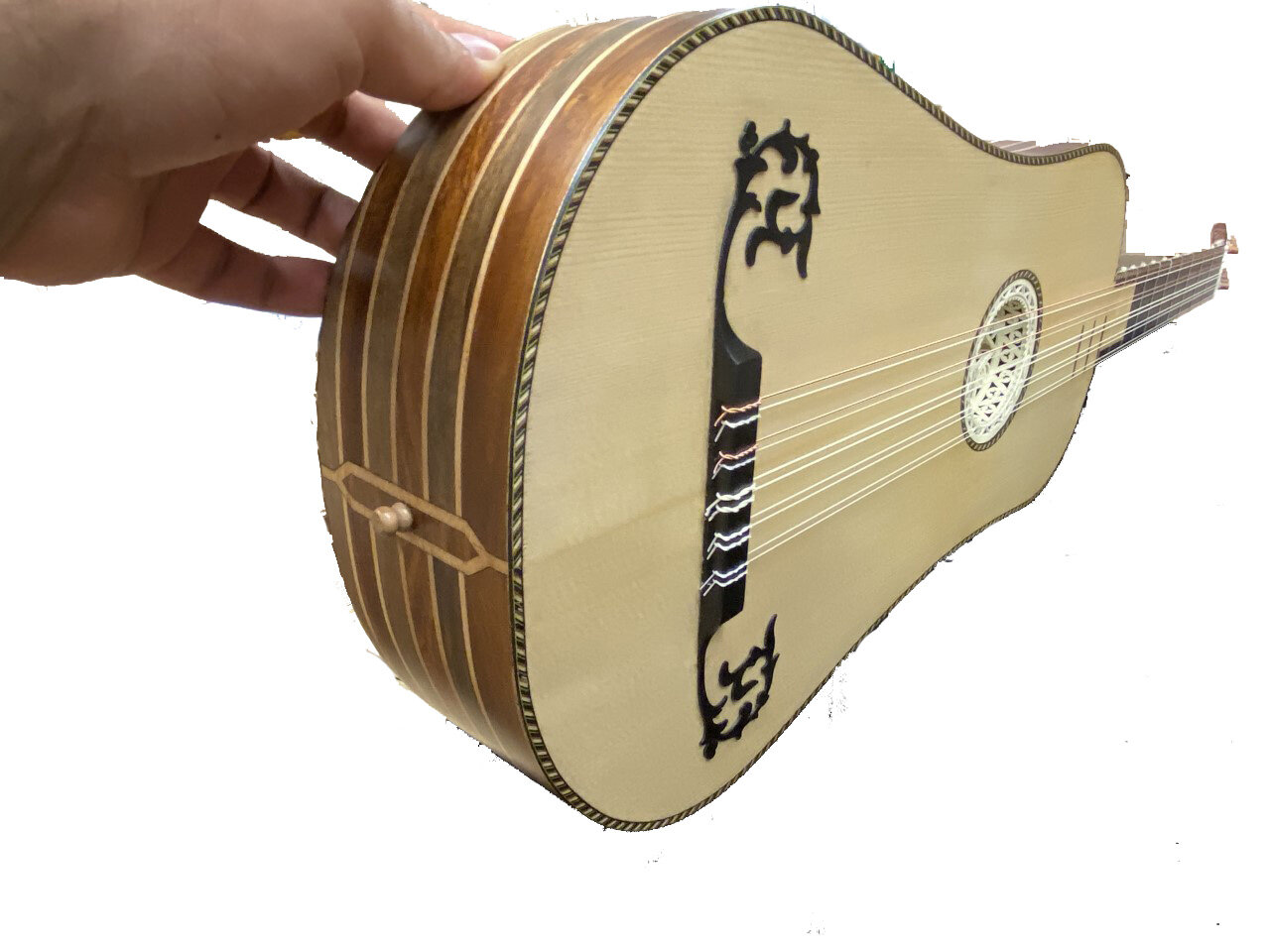Baroque, Renaissance, Romantic & Early Music Guitars
Many classical guitarists also have a passion for the early music repertoire and have asked us to help identify quality early music guitars, including Baroque, Renaissance, Romantic & similar guitars to add to our traditional classical guitar range.
Our GuitarsOnline Range of Baroque, Renaissance, Romantic & Early Music Guitars
Can’t find the baroque or early misuc guitar you’re looking for?
If you can’t find the guitar you’re looking for in our current range, please contact Pierre on pierre@guitarsonline.com.au or m: 0410 708 338 - and we can help you source it.
Exploring the Evolution of Baroque Guitars & Early Music Guitars
The history of the guitar is a fascinating journey through time, marked by the evolution of design, tuning, repertoire, and playing techniques.
From the Renaissance guitar to the Baroque, Romantic, and finally the Classical guitar, each era brought unique characteristics to the instrument.
This article dives into the distinctions between these historical guitars, focusing on their tuning, construction, repertoire, and playing techniques.
For classical guitar players and music enthusiasts, understanding these differences enriches both performance and appreciation of early music guitars.
Renaissance Guitars (c. 1500–1600)
Tuning: Renaissance guitars typically had four courses (pairs of strings) tuned to G–c–e–a, resembling the top four strings of a modern ukulele. This straightforward tuning made the instrument accessible for both amateurs and professional musicians.
Construction: These guitars were small and lightweight, with a simple, functional design. They featured a flat back and a modest soundhole, often decorated with minimal rosette patterns. Their compact size made them easy to carry and ideal for accompanying dances or songs.
Repertoire: The Renaissance guitar was primarily used for dance music and simple accompaniments. Early publications, such as those by Adrian Le Roy, contain charming pieces that highlight the guitar's rhythmic capabilities.
Playing Techniques: Players often employed strumming (known as rasgueado) to create rhythmic accompaniments. Fingerstyle playing was less common but occasionally used for melodic passages.
Baroque Guitars (c. 1600–1750)
Tuning: Baroque guitars expanded to five courses, typically tuned to A–d–g–b–e'. These courses could be strung in unison or octaves, adding harmonic richness. Alternative tunings were also employed to suit specific pieces or regional styles.
Construction: Baroque guitars were slightly larger than their Renaissance predecessors and more ornate. Builders adorned them with intricate rosettes, inlays, and decorative bindings. They retained ladder bracing, which contributed to their bright and resonant tone.
Repertoire: The Baroque guitar's repertoire grew more sophisticated, featuring works by composers like Gaspar Sanz, Francesco Corbetta, and Robert de Visée. These pieces combined intricate melodies with strummed harmonies, showcasing the instrument’s versatility.
Playing Techniques: Baroque guitarists combined rasgueado (strumming) and punteado (plucking) techniques, often within the same piece. Ornamentation was heavily used, reflecting the Baroque era's emphasis on expressive detail.
Romantic Guitars (c. 1780–1850)
Tuning: By the Romantic period, guitars adopted six single strings, transitioning from courses. The standard tuning, E–A–d–g–b–e', became the foundation for modern guitar tuning.
Construction: Romantic guitars were slightly larger than Baroque guitars but still smaller than today's classical guitars. They introduced fan bracing, which improved tonal projection and sustain. Builders like Johann Georg Stauffer and René Lacôte crafted guitars with a balanced, warm tone ideal for Romantic music.
Repertoire: This era saw the emergence of virtuoso guitarists and composers such as Fernando Sor, Mauro Giuliani, and Dionisio Aguado. Their compositions featured complex melodies and harmonies, elevating the guitar to a concert instrument.
Playing Techniques: Romantic guitarists focused on expressive, melodic playing. Techniques like arpeggios, legato passages, and dynamic contrasts became central to performance, reflecting the Romantic era's emotional depth.
Classical Guitars (19th Century Onward)
Tuning: Classical guitars retained the six-string tuning established in the Romantic period. The consistency of E–A–d–g–b–e' allowed for a wide range of repertoire and technical exploration.
Construction: Antonio de Torres, often called the father of the modern classical guitar, revolutionized the instrument’s design. His guitars featured larger bodies, improved fan bracing, and a refined shape, resulting in greater volume and tonal richness.
Repertoire: The classical guitar repertoire continued to expand, incorporating works by Francisco Tárrega and later 20th-century composers. This period solidified the guitar's status as a versatile solo and ensemble instrument.
Playing Techniques: Classical guitarists emphasized precision and tonal variety. Techniques like tremolo, artificial harmonics, and advanced fingerstyle playing became standard, reflecting the instrument’s technical and expressive capabilities.
Your Next Step …
From the Renaissance to the Classical era, the guitar evolved significantly, adapting to the musical and cultural demands of each period.
Whether you’re a classical guitarist or a music enthusiast, exploring these early music guitars—from the Baroque guitar’s intricate ornamentation to the Romantic guitar’s melodic expressiveness—provides invaluable insights into the instrument's rich heritage.
By understanding the tuning, construction, repertoire, and techniques of these historical guitars, you can deepen your connection to their music and legacy.
Discovering the lineage of early music guitars not only enhances your playing but also brings history to life.
So, pick up a Baroque or Romantic guitar (or maybe your favourite classical guitar), and let its timeless sound transport you to another era!






